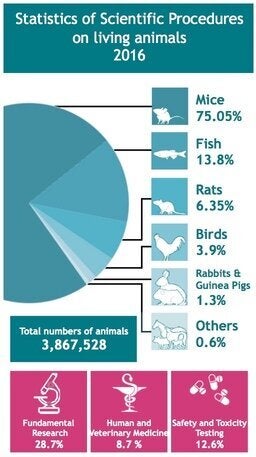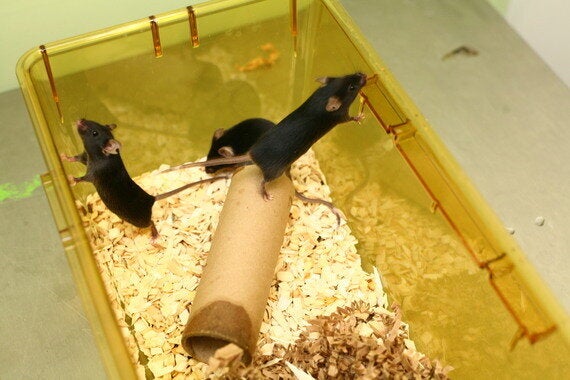
On Thursday the Home Office animal research statistics have been released showing 3.94 million procedures on animals in Great Britain in 2016, a 5% decline from 2015. While the overwhelming majority of research (over 96%) is carried out using mice, fish, rats and birds, research is also conducted on frogs, guinea pigs, sheep, primates and other species. The annual statistics also provide information on the severity of experiments.
While much of the public still believes animal research is done in the UK for cosmetic purposes (it's not), the reality is that most is done in order to understand our biology, the diseases which affect us, and to develop and test treatments for humans and animals. Animal research has been key to the development of both current and historical medical breakthroughs. Here are five recent examples:
- Cervical Cancer - 90% of cervical cancer is caused by the human papilloma virus (HPV). Studies in mice, dogs, cows and monkeys - each suffering their own form of papilloma virus - allowed scientists to develop a vaccine, which is now offered to all 12-13 year old girls in the UK. Researchers in Scotland found a 90% fall in HPV levels thanks to the new treatment - with similar falls in cervical cancer expected to follow.
- Paralysis - Darek Fidyka was paralysed from the waist down after a knife attack - now he can cycle around thanks to a ground-breaking stem cell treatment. Two years prior, the same treatment had been used to treat pet dogs which had been paralysed in accidents, and even this relied on two decades of research on mice and rats, done by Professor Raisman at UCL.
- Malaria - World Malaria Day once again highlighted a disease which kills over 400,000 people per year, particularly children and pregnant mothers. It was also a chance to celebrate the first vaccine - RTS,S - which is being given to people in Ghana, Kenya and Malawi. This vaccine was developed in mice and rabbits. Artemisinin was also discovered as an effective treatment for Malaria through research on mice and monkeys - a discovery which resulted in Youyou Tu winning a Nobel Prize.

Animal research is key to the development of modern medicine. It is no surprise that 94 of the 106 Nobel Prizes given for Physiology or Medicine have directly involved the use of animals. In the UK, animal experiments are carried out under highly regulated conditions, and are only allowed where there are no non-animal methods that can be used instead. Animals are not used for testing tobacco (banned in 1997) or cosmetics (banned in 1998), but research is carried out to continue to make progress on the many diseases which remain a scourge on humanity.